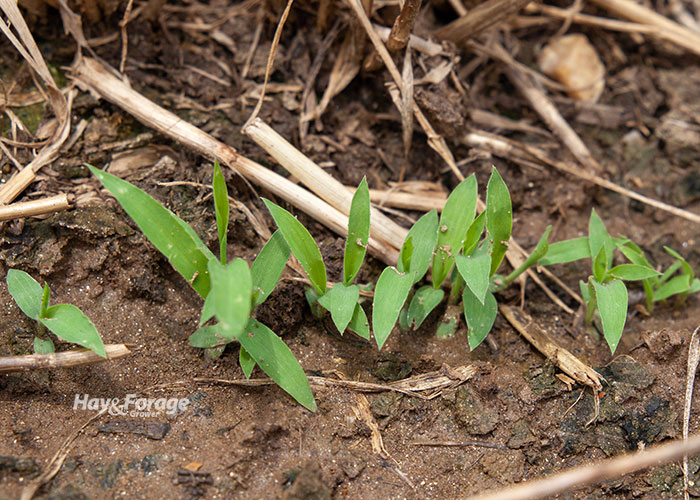
Who would have thought not too many years ago that crabgrass would reach the rock-star status it now enjoys? Even its name isn’t particularly enticing.
Okay, maybe there are some of you who still wouldn’t consider crabgrass as a staple summer forage resource, but I have never met anyone using crabgrass who didn’t love the stuff. It is a warm-season species that has a fairly wide range of adaptability, being utilized in the North as well as the South.
Even though crabgrass is considered an annual, it is a prolific seed producer and reseeder. An initial stand of crabgrass will keep on giving summer after summer, if it is allowed to reseed at some point during the growing season. When needed, a reduced seeding rate can be used to bolster production if stands become too thin.
The improved, cultivated type of crabgrass is different from the historical weedy types that people learned to hate. The one most people consider a weed is hairy crabgrass (Digitaria sanguinalis). The newer forage types are referred to as southern crabgrass (Digitaria ciliaris), which is considered a separate species.
It was the Noble Research Institute in Ardmore, Okla., that got the improved crabgrass train rolling. R.L. Dalrymple developed and released the Red River crabgrass variety in the 1980s. This was later followed by the development and release of the Quick-N-Big variety in 2006 and is still widely used today.
Most recently, the Noble Research Institute developed and released a crabgrass cultivar called Impact, which matures later than Red River. It is marketed by Barenbrug USA.
Get stands off to a good start
Although crabgrass is more drought tolerant than many species, forage production will be maximized on fields with good water holding capacity. Seeding in early to mid-spring is generally the best time for establishment.
Initially, most people start with a clean seedbed. No-till seeding is also an option to introduce crabgrass into an existing pasture. Similar to some other warm-season species, the seed is fluffy and hairy, so a “carrier” is sometimes needed to adequately move seed through the drill. Another approach is to use coated seed. Broadcasted raw seed won’t spread far with a spinner-seeder. Either drill or broadcast the seed at 3 to 6 pounds per acre (lower end of range for bare seed; higher end for coated seed).
Sunlight will stimulate crabgrass seed germination. For this reason, planting shallow is better than planting deep. Most extension specialists recommend seeding at about 1/4-inch deep. Initially, keep competition from other forage species and weeds to a minimum.
With adequate moisture and warmer temperatures, crabgrass seed germinates quickly, usually within a few days. Plants will spread with stolons over time, and grazing can usually start about 40 days after seeding (at least 6 inches tall). Once crabgrass seedlings have three to four collared leaves, a low-rate application of 2,4-D can be applied to control germinated broadleaf weeds.
Some livestock producers like to make crabgrass hay or baleage, even though it dries a bit more slowly because of its hairy plant tissue. Often, two cuttings per year can be made if fields are cut in the boot to early heading stage. Leave at least a 3- to 4-inch stubble to encourage regrowth.
For grazing, crabgrass fits well into a rotation with a winter-annual cereal such as wheat or rye. The cereal provides forage grazing in the fall and early spring and then the crabgrass grows during the summer and early fall.
Whether grazing or haying, crabgrass will need adequate nitrogen for optimum yields and forage quality. Split applications of about 50 pounds per acre are generally recommended.
Quality drives use
There is no other warm-season grass that provides higher quality forage than crabgrass. Put simply: Cows love the stuff. Studies using crabgrass as a grazing resource consistently report average daily gains of 1.5 to 2 pounds. With proper fertilization, it is high in crude protein, has excellent fiber digestibility, and the fiber content is relatively low.
There are many good options to fill the summer forage slump characterized by all cool-season species; however, among these options, it’s hard to beat an improved crabgrass variety.

